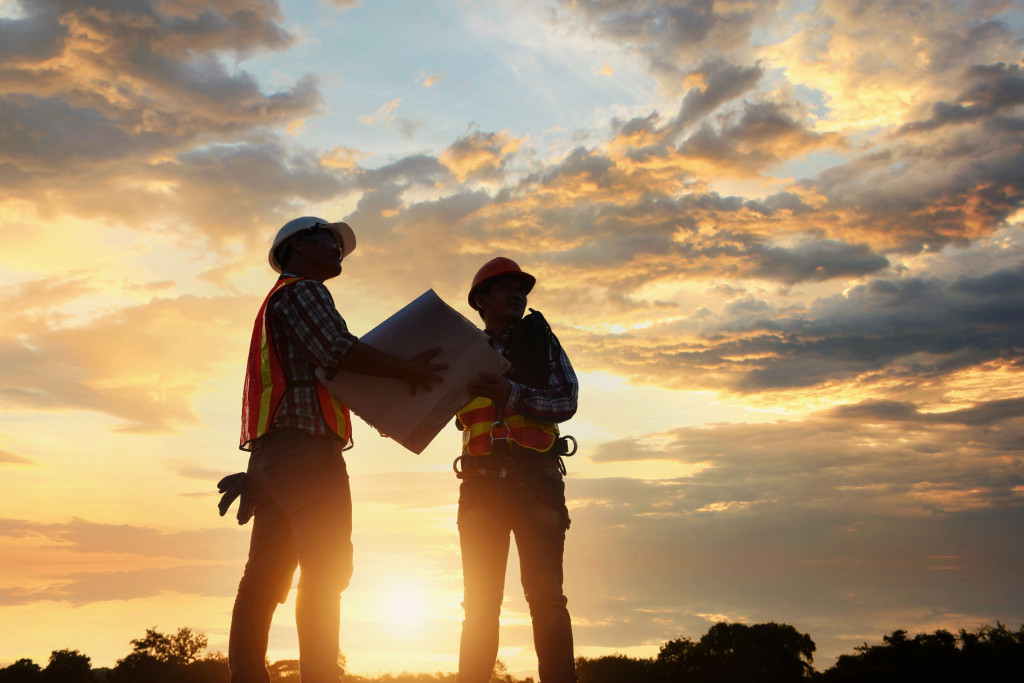In the construction business, accuracy is critical. Whether you measure for a new build or a renovation, having the right tools to ensure accurate measurements can mean the difference between a successful project and a costly mistake. But with so many different measurement tools on the market, how do you know which ones are right for your business?
Never fear! Here’s a list of the top measurement tools every construction business should have to ensure accurate measurements every time. Read on to learn more.
Laser Distance Measurer
If you’re looking for a fast, easy-to-use, and highly accurate tool, look no further than a laser distance measurer. This works by emitting a laser beam reflecting off your measuring surface, providing an instant and accurate reading. They’re perfect for measuring long distances and can even be used in challenging environments where traditional tape measures might not get an accurate reading.
Always hold a laser distance measure perpendicular to your measuring surface when using a laser distance measurer. This will ensure an accurate reading. Additionally, be aware of your surroundings and ensure there is nothing in the way that could obstruct the laser beam. It would help if you remembered that most laser measurers aren’t waterproof, so be careful outdoors.
When choosing a laser distance measurer, there are a few things you’ll want to keep in mind. First, make sure the model you choose is compatible with the units of measurement you’ll be using. You’ll also want to consider the range of the device and whether it’s waterproof.
Most importantly, however, you’ll want to ensure the device is accurate. To do this, read reviews from other users to get an idea of how well the device performs. You can also check out measurement tests performed by independent organizations to see how different models compare.
Pipe Caliper
A pipe caliper is a tool used to measure the diameter of pipes and tubes. It’s highly accurate and can measure diameters up to 12 inches, which makes it perfect for measuring tools in construction projects.
When using a pipe caliper, always measure the pipe’s diameter at a point as close to the center of the tube as possible. This will ensure the most accurate measurement. It would be best if you also were sure to use the same side of the caliper as much as possible, as this will give you more consistent readings.
Consider the pipe size you’ll be measuring when choosing a pipe caliper. Calipers are available for pipes of all different sizes, so select the one best suited for your needs.
Another thing to consider is accuracy. Not all pipe calipers are created equal in terms of accuracy. When choosing a caliper, select one with a high degree of accuracy, so you can rest assured that your measurements are as precise as possible.
Digital Angle Finder
Another essential tool for any construction business is a digital angle finder. These are used to measure angles quickly and accurately, making them perfect for use in tight spaces or when taking measurements from an awkward angle. They use sensors to calculate the angle between two surfaces and then display the results digitally on an easy-to-read LCD screen.
Digital angle finders are used in a variety of ways in construction projects. One of the most common applications is measuring a roof’s angle. This is done by using the angle finder to measure the roof angle at two points and then calculating the difference between the two readings. This will give you an accurate measurement of the roof’s pitch.
Digital angle finders can also measure angles in tight spaces or when taking measurements from an awkward angle. This makes them ideal for use when installing crown molding, baseboards, and other trim around a room.
Finally, you can use digital angle finders to check the levelness of a surface. This is often done before installing tile or laminate flooring. Using the angle finder to measure the surface at several points, you can get an accurate reading of its levelness and make any necessary adjustments.
Level

A level is one of the most basic—but essential—tools you’ll need for taking accurate measurements in construction. A level is used to determine whether or not a surface is level (horizontal) or plumb (vertical).
Having at least one level on hand is essential to quickly check surfaces and ensure they’re level before proceeding with any construction work. Moreover, it’s beneficial to ensure that two points on a surface are aligned in the same plane.
When choosing a level, you must consider its accuracy and readability. Look for one with an easy-to-read display and sensors that offer accurate readings. Higher quality levels will have additional features like digital screens or laser lines to help with precision measurements.
The type of level you need will depend on the type of construction project you’re working on. A smaller hand-held level is perfect for small tasks, while a larger frame level can measure long distances. A laser line level may be your best option for large projects like laying foundations.
These are just a few of the essential tools you’ll need for taking accurate measurements in construction. By investing in quality tools like these, you can be confident that your construction projects will stay on track—and within budget!

